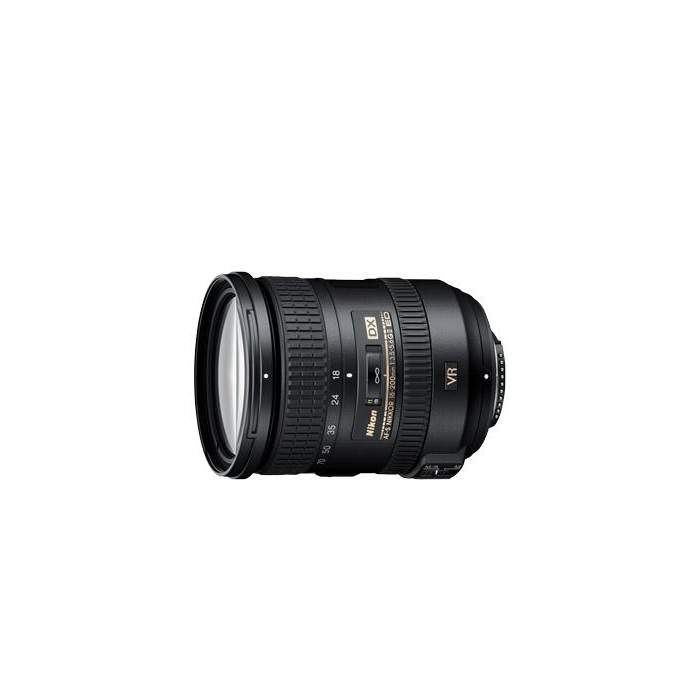Discover related products
Discover related products
The lens barrel is constructed from high quality plastics with a metal lens mount, similar to other consumer level lenses. It has a slightly textured finish, which doesn’t show marks easily. To address an issue found on the older Nikon 18-200mm lens, a switch to lock the lens at 18mm is provided to prevent the lens extending during transport, or when it is drawn from a camera bag. At maximum telephoto the lens is almost double its original length. The zoom mechanism extends in two sections smoothly and unfortunately creeps forward when pointed towards the ground when zoomed past 35mm, which may pose issues when used on a tripod. It balances extremely well on the Nikon D300 body used for testing and isn't a backbreaking weight at 565g.
As focusing is performed internally the 72mm filter thread does not rotate during use, making this lens ideal for use with polarising and neutral density graduated filters. Focus speeds are pretty quick for a super-zoom lens and the thin manual focus ring offers a decent amount of resistance, which makes applying fine adjustments fairly straightforward.
The minimum focus distance of 50cm allows frame filling close-ups to be taken at maximum zoom.
Nikon's Vibration Reduction II system promises to allow hand-held shots to be taken at shutter speeds up to four times slower than would be possible without the technology. So long as the system is given time to kick in properly and images are shot with care, handheld shots at 1/20sec are quite possible at 200mm, which is over four stops slower than the usual rule of thumb would normally recommend.
| Lens mount | Nikon F |
| Lens Format Coverage | Full Frame |
| Lens Design | Zoom Lenses |
| Lens focus length, mm | 18-200 |
| Focus Type | Autofocus |
| Image Stabilization | Yes |
| Lens type | tele zoom |
| Filter size | 72mm |
| Maximum Aperture | f/3.5 to 5.6 |
- 1. Evaluate your options.
- 2a. If you want to buy only one product with Aizdevums.lv leasing, then fill out the application here
- 2b. If you want to buy several items or use another leasing company, then put the items in the basket and choose the leasing service when ordering.
We offer leasing from Aizdevums SIA, Incredit SIA, ESTO.
Manager will check the availability of the items in the cart and send the loan application link. - 3. If you receive a positive response, contact us to purchase the product. Consultants will check the availability of the product.
- 4. If the product is available in the store or to be ordered from the warehouse, and you have received an affirmative answer from our consultants, please visit the store to proceed with purchase and leasing documents.
- 4a. You can also ask us to issue an invoice for this product and visit one of the leasing company branches to sign up leasing documents *..
- 5. Once the leasing documents have been signed up, you can receive the product in the store, if it is on site or inform our consultants and they will order it for you from the warehouse.
- *It is possible to arrange delivery for leased goods, so you can also perform the entire purchase process remotely.
**The sequence of leasing steps is the same for leases offered by InCredit Group.
***In case of doubt, contact our consultants!
When using leasing services, carefully evaluate your options to repay the loan!Lease
 Google
Google






